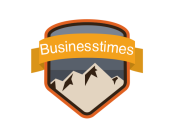[ad_1]
Vaccine-patent waivers by WTO can be of great help in fighting Covid-19. But the waivers are getting delayed. Besides, the narrow geography of the global vaccine-making chain raises concerns over imbalance in vaccine distribution. Vaccine-making countries will control production and distribution even after waivers. The fight over patent waivers at WTO will mainly be fought by these countries, over protecting intellectual property of their vaccine-makers. The waivers would enable countries like India with strong vaccine-making capacities to churn out large quantities.
Vaccine production is dominated by the G7—the US, the UK, Japan, Germany, Canada, France and Italy—along with some from the G20 (Argentina, Australia, Brazil, China, India, Russia and South Korea). The EU dominates due to proficiencies in Germany, France, Italy, Switzerland and Belgium. The vaccine supply-chain requires sourcing both essential and supporting chemical ingredients and non-chemical inputs. Cholesterol and mRNA are examples of essential ingredients of some Covid 19 vaccines. L-histidine, acetic acid and sodium chloride are among common supporting ingredients. Syringes and vials are non-chemical inputs key to adminstering vaccines.
The global vaccine value-chain is predominantly concentrated among major producing countries. Several are leading vaccine exporters and importers as well. Their two-way trade reflects large domestic capacities and abilities to export, as well as high internal demand for a variety of vaccines requiring imports. France, UK, US, Germany and India were among the top vaccine exporters in 2019. They were also among the largest importers. At the same time, the largest vaccine producers are also major sources of vaccine ingredients. The import dependence of major vaccine producers on each other for sourcing of ingredients is strikingly high.
Research on cross-border trade flows for essential ingredients of Covid-19 vaccines (bit.ly/3wQxaqh) reveals these dependencies. India, for example, imports nearly three-quarters of essential ingredients, with heavy dependence on the US and the EU, followed by China. China is more dependent on the US than India for imported ingredients. The US is notably more reliant on the EU and Japan for these ingredients. The mutual dependence between the US and EU is noteworthy. While the US sources around 38% of the key ingredients from the EU, the latter obtains more than 50% from the US.
The geography of the vaccine value-chain has interesting implications. Presently, the race is dominated by Pfizer, Moderna, AstraZeneca, Johnson & Johnson, Russia’s Gamaleya Institute and Sinovac Biotech. The American, European and British firms are competing with the Russian and Chinese firms. The former enjoy higher credibility, enabling them to enter into advance purchase agreements with various countries. Patents held by these firms are being keenly eyed by Indian firms and other producers with large capacities. The pressure to protect patents and resist waivers at the WTO would be from US and EU pharma firms. This is encouraging many of them to enter into voluntary licensing agreements with vaccine makers like Serum Institute of India and Biological E. Once waivers come, these licensing opportunities might cease.
These voluntary licence agreements would ramp up vaccine supplies in India. But they are unlikely to benefit poor countries. Bulk of the ‘Made in India’ vaccines would be delivered to countries with whom contracting foreign firms have purchase agreements. Several of these countries will likely be main vaccine producers themselves, particularly the OECD nations, that are ahead of the rest of the world in vaccinating their people.
More vaccines made in India doesn’t mean more vaccines for the global poor. The closed vaccine value-chain geography prevents egalitarian distribution of vaccines. Such a possibility might have come from patent waivers, but is becoming remote by the day, as waiver talks get delayed and voluntary licence agreements proliferate.
The author is Senior research fellow and research lead (trade and economics), Institute of South Asian Studies, NUS. Views are personal; amitendu@gmail.com
Get live Stock Prices from BSE, NSE, US Market and latest NAV, portfolio of Mutual Funds, Check out latest IPO News, Best Performing IPOs, calculate your tax by Income Tax Calculator, know market’s Top Gainers, Top Losers & Best Equity Funds. Like us on Facebook and follow us on Twitter.
![]() Financial Express is now on Telegram. Click here to join our channel and stay updated with the latest Biz news and updates.
Financial Express is now on Telegram. Click here to join our channel and stay updated with the latest Biz news and updates.
[ad_2]
Source link

